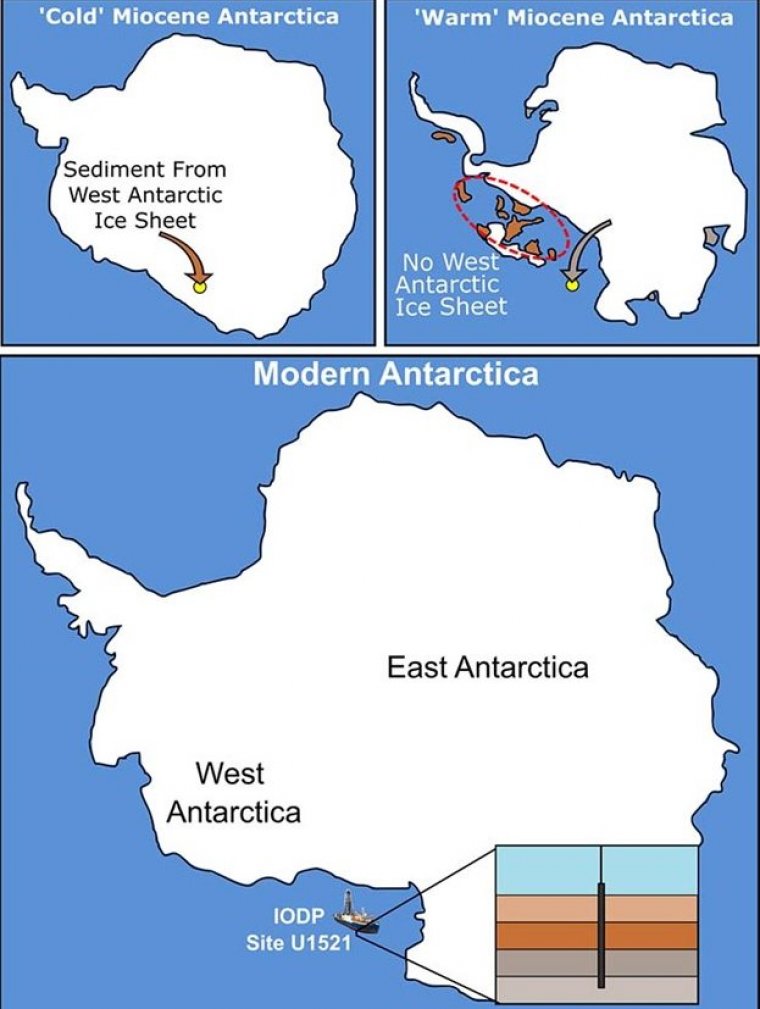| News / Science News |
Antarctic ice's deep past shows it could be more vulnerable to warming
In a study, University of South Florida researcher Amelia Shevenell and her colleagues documented the evolution of Antarctica's ice sheets some 20 million years ago.

Scientists have documented the evolution of Antarctica's ice sheets. Photo: Jim Marschalek
During this period, called the Early Miocene, Earth experienced both warm and cold climates. Atmospheric concentrations of carbon dioxide were like those expected by 2100, if greenhouse gas emissions continue at the present rate.
During warm Miocene climates, sea level rose by up to 60 meters (197 feet) -- the equivalent of melting all the ice currently on the Antarctic continent.
Until now, the contributions of the larger East Antarctic Ice Sheet, or EAIS, and the smaller West Antarctic Ice Sheet, or WAIS, to past global sea levels were uncertain.
The research was conducted as part of International Ocean Discovery Program Expedition 374 to the Ross Sea in Antarctica.
IODP Expedition 374 recovered some 1.5 kilometers (nearly 1 mile) of mud from the ocean floor, which scientists are analyzing to reconstruct Antarctica's ice sheet evolution over the last 20 million years.
The study, led by Imperial College London researcher Jim Marschalek, shows that the WAIS, the smaller and more climatically sensitive of today's Antarctic ice sheets, existed and contributed significantly to global sea level 8 million years earlier than previously known.
The research also reveals that the young WAIS was highly erosive, which lowered the elevation of the land beneath the WAIS below sea level, increasing its vulnerability to climate and ocean changes.
The study provides essential data for climate models, which are used to accurately predict future global sea levels as Earth warms and Antarctica's ice sheets melt.
"Understanding past climate conditions and the behavior of Antarctica's ice sheets is essential to predicting how much and how fast sea levels will rise in the future," said Shevenell.
"What's happening in Antarctica now and in the past may not seem important in our everyday lives. But the West Antarctic Ice Sheet is contributing to global sea level rise, and its contributions are increasing as Earth warms. If this part of Antarctica were to melt completely, global sea levels would rise about 15 feet, which would displace millions of people worldwide." (National Science Foundation)





